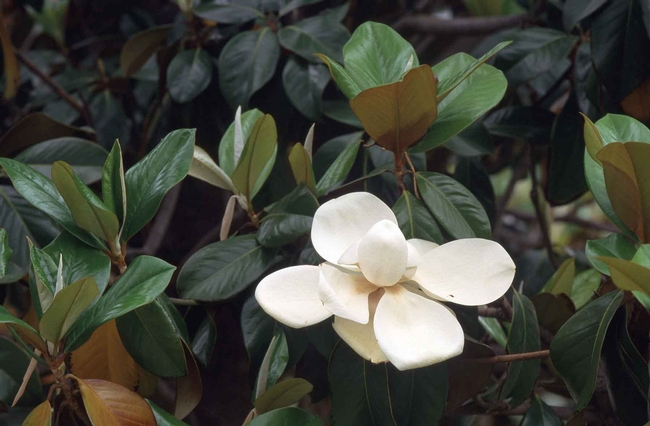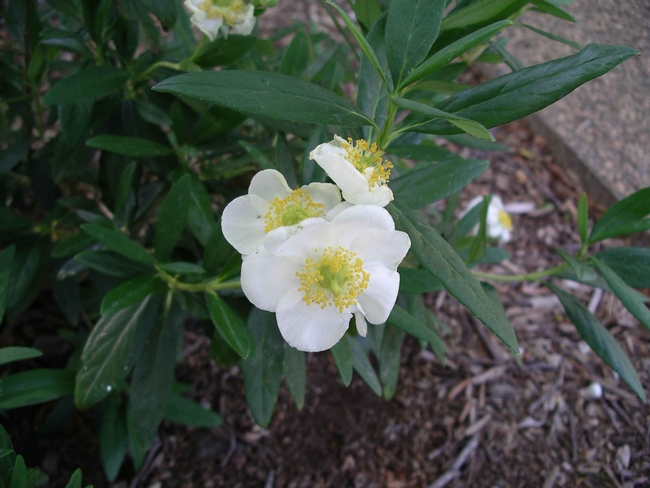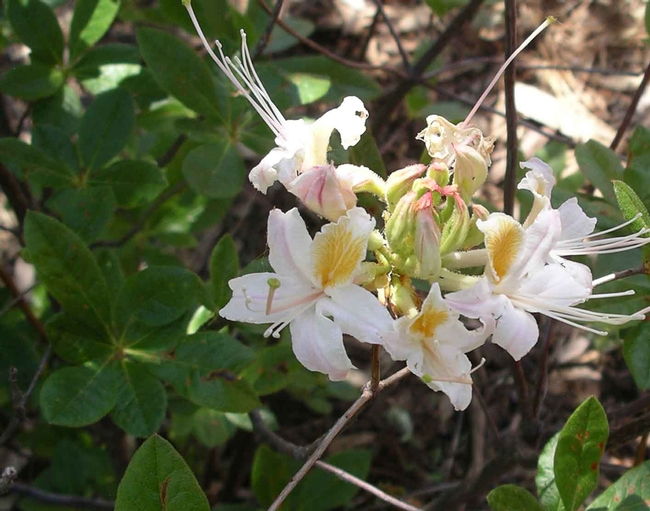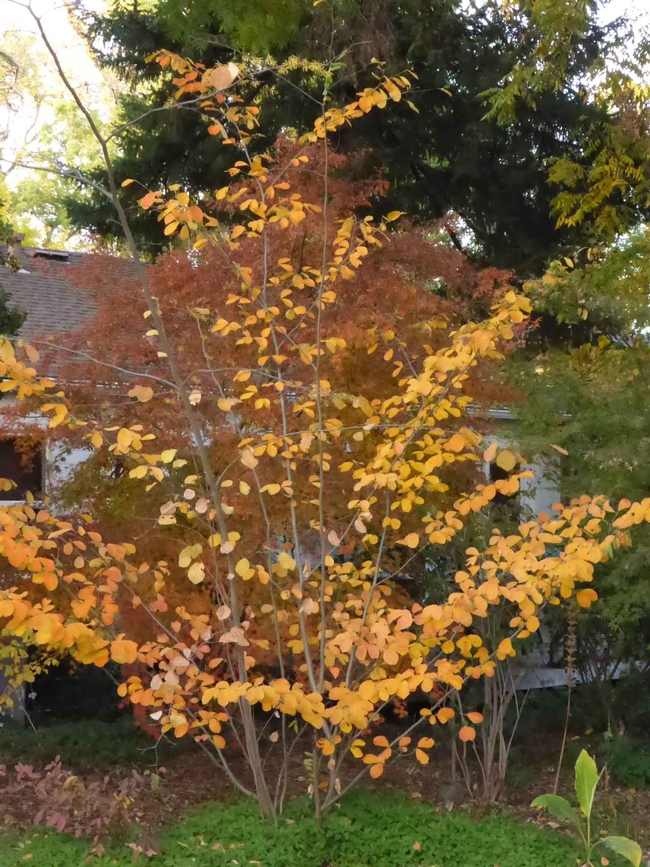What is a moon garden? It is a garden that incorporates reflective surfaces, light-colored flowers, fragrant plants, and peaceful sounds, all meant to be enjoyed by the light of the moon. It is the perfect garden spot for busy professionals who don't have time during the day to enjoy their gardens.
Magnolia flower by Jack Kelly Clark, UC IPM
California bush anemone by Cindy Weiner
A moon garden can include trees, shrubs, grasses, perennials and annuals. It is usually created as a summer garden, but by adding deciduous shrubs and trees with interesting architectural form, a moon garden can be enjoyed year round.
Western azalea by Cindy Weiner
Plants that have light green or gray foliage will also reflect can add another layer of interest as the moonlight reflects off the leaves. Possibilities include lamb's ears, silver mound Artemisia, hosta, blue fescue and lavender.
Witch hazel 'Arnold Promise' by Jeanne Lawrence
Once you have created your romantic, whimsical garden, don't forget to take some time to enjoy it. Once outside, allow at least ten minutes for your eyes to adjust to the dark. As you gaze on the garden and begin to notice reflections from the moonlight, you will see that the flowers and leaves appear to be floating. Take in the sounds of your water feature or wind chimes. Breathe in the fragrance of the night-blooming flowers. Relax and enjoy.
For more inspiration: The UC Davis Arboretum has a moon garden, the Carolee Shields White Flower Garden and Gazebo. You can learn about it here.
If you have a gardening question or problem, call the Master Gardener Hotline at (530) 538-7201 or email mgbutte@ucanr.edu. The UC Master Gardeners of Butte County are part of the University of California Cooperative Extension (UCCE) system, serving our community in a variety of ways, including 4H, farm advisors, and nutrition and physical activity programs. Our mission is to enhance local quality of life by bringing practical, scientifically-based knowledge directly to our community. To learn more about UCCE Butte County Master Gardeners and their upcoming events, and for help with gardening in our area, visit https://ucanr.edu/sites/bcmg/.



